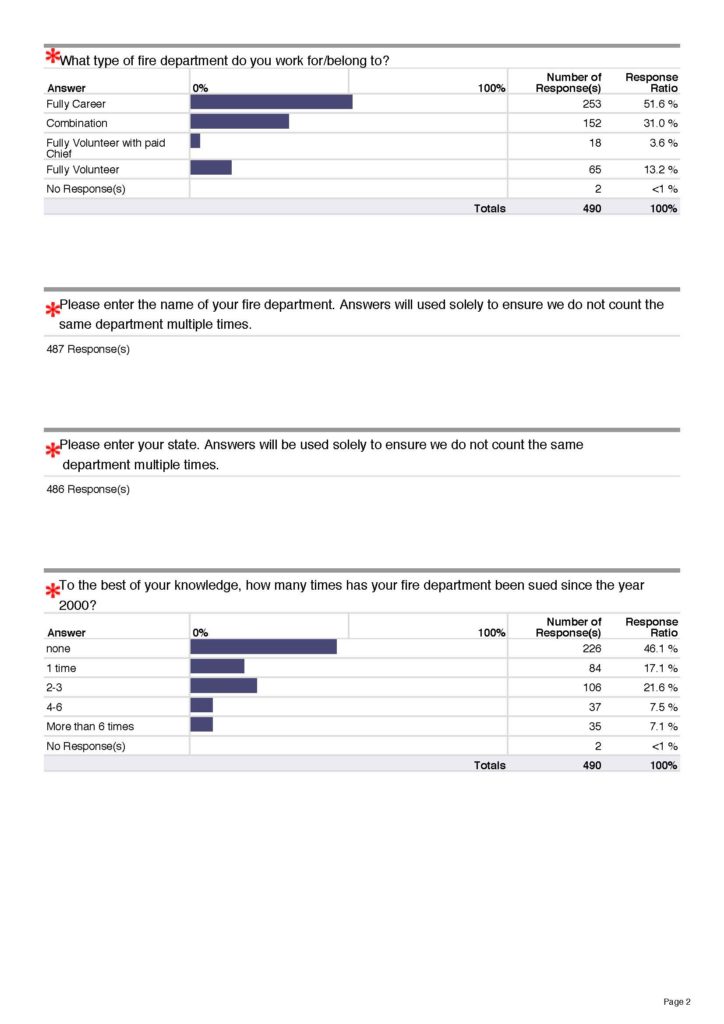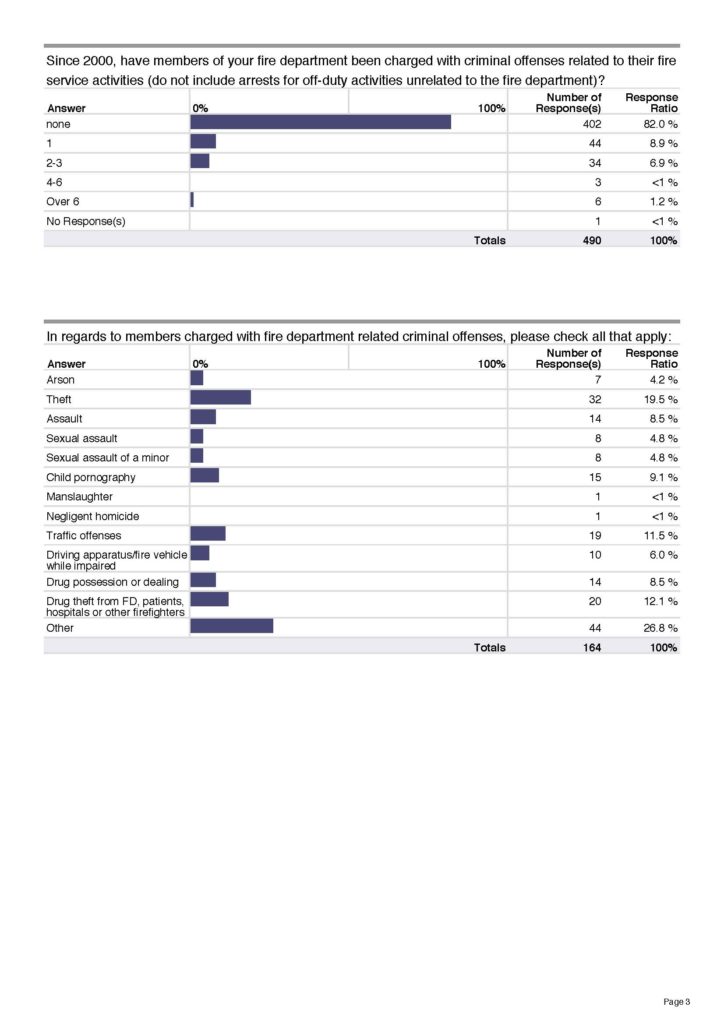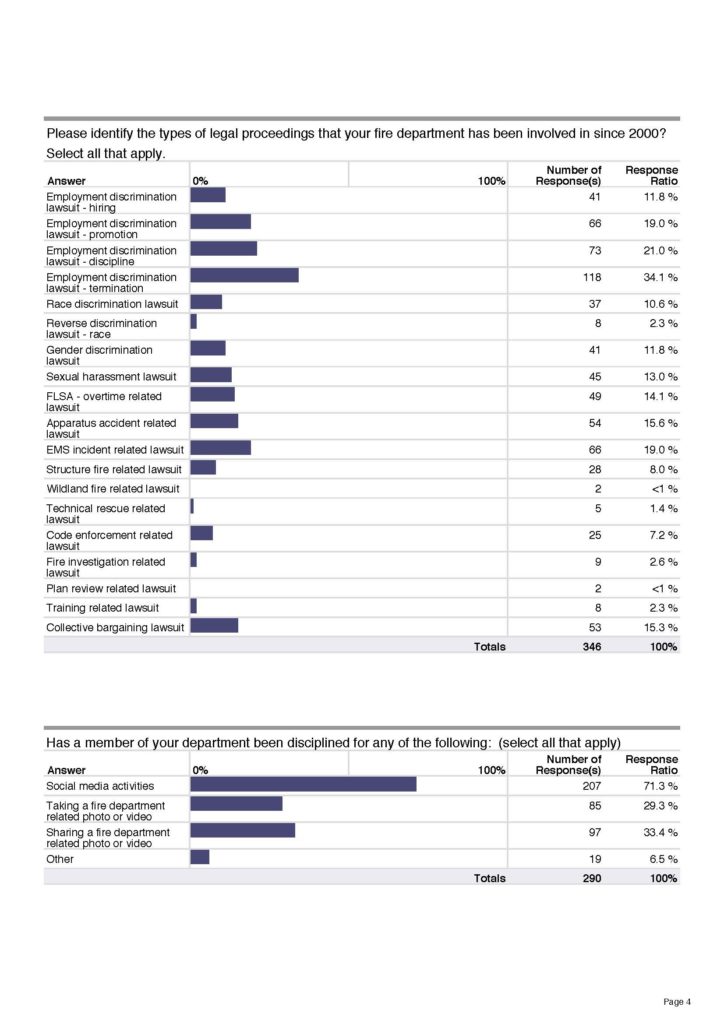In today’s episode, Curt discusses the results of a survey of legal proceedings in fire departments with firefighter-attorney Bill Maccarone. The raw data from the survey is provided below. My recommendation is that you view the data while listening to the podcast, as during the podcast we do not mention all of the actual numbers. If you have the data in front of you the discussion will make a lot more sense.
My very best wishes for a Merry Christmas. For the sisters and brothers who are working tonight and tomorrow, stay safe.
Updated: 12/25/19 – During the podcast, we were stumped by the difference between the frequency of termination related discrimination lawsuits in the survey compared with what we are seeing in the fire litigation database. The survey data suggests that termination suits are the most common civil suit, while the fire litigation database suggests that sexual discrimination is the most common lawsuit.
Two very astute listeners reached out. One expounded on our initial suspicions that the rank of those submitted the replies may have played a role in the perception that termination-related suits were most common. His perspective was that the average firefighter on a shift is likely to be aware of a firefighter being terminated, and filing suit to get his/her job back, but may not aware of other types of discrimination claims.
The other listener suggested that our methodology may be the cause for some/all of the difference. In the survey, we merely asked if the fire department had been sued over the past 20 years (2000-2019). A yes response in a given category counted as 1 response, whether the fire department had been sued once or 20 times for each category.
On the other hand, the fire litigation database counts the exact number of suits filed against each department in each category, so that a department that faced 20 gender discrimination suits over 20 years would be counted as 20, not 1. Thus, while the survey suggests that more fire departments have faced termination-related discrimination suits than gender discrimination suits, it may very well be that those fewer fire departments actually faced multiple gender discrimination suits.
It is impossible to know if either of these possibilities has it right. However, both point to the need to improve the survey design going forward.
Thank you all for the input.
 Fire Law Blog Fire Service and Public Safety Legal Issues Blog by Curt Varone
Fire Law Blog Fire Service and Public Safety Legal Issues Blog by Curt Varone




